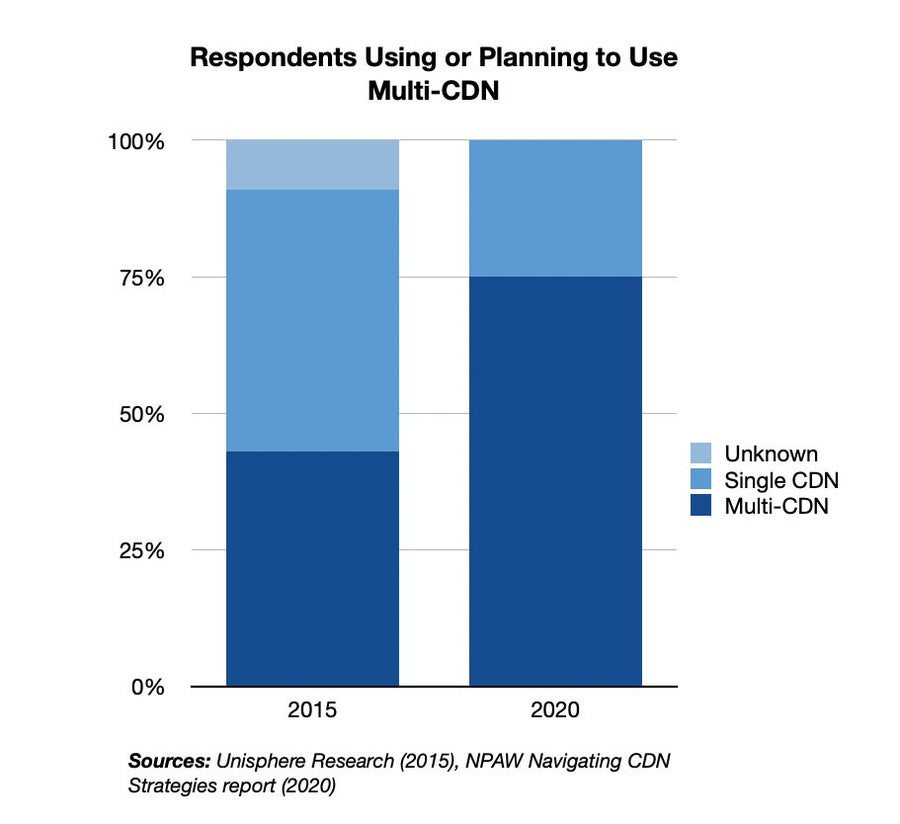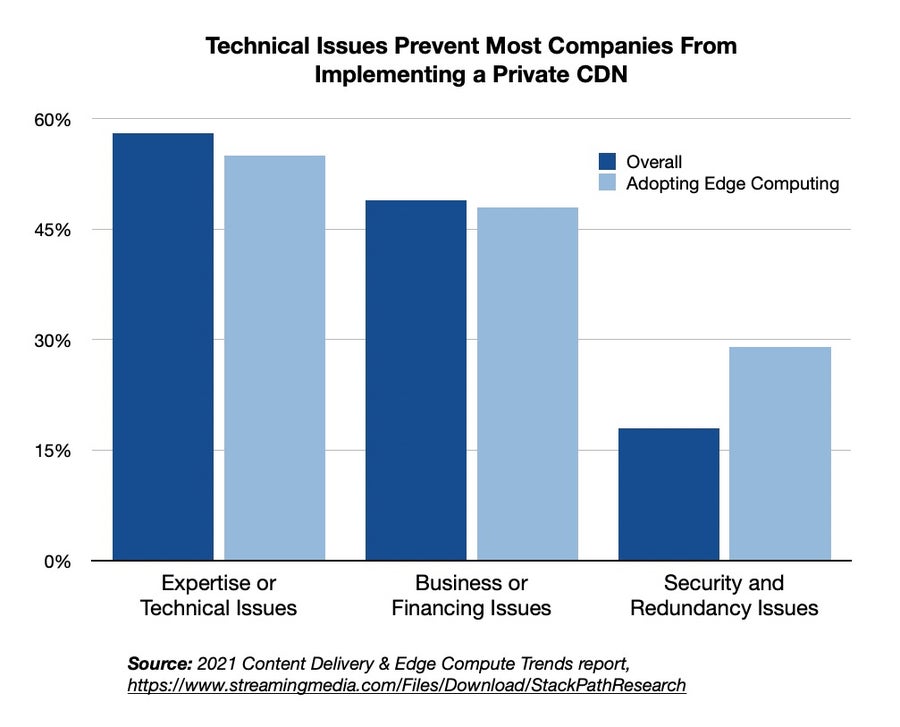The Importance of Multi-CDN in Two Charts

Principal Industry Marketing Manager, Media & Entertainment, Fastly
When content delivery networks (CDNs) garner coverage in the media, it's almost always because of an outage. Yet, outages are not a major reason to move to adopt multiple CDNs. It's not even in the top 5 reasons, according to the NPAW Navigating CDN Strategies survey.
Instead, the most popular reasons for moving to a multi-CDN architecture are to reduce the cost of streaming, improve the quality of experience (QoE), and create an adaptable infrastructure to handle local bandwidth issues.
While larger content companies and distributors have almost universally embraced Multi-CDN, many cloud companies — especially smaller firms and startups — have not yet moved to a distribution strategy built on top of multiple CDNs. If you are one of those companies or have changed providers and want to make your multiple CDN architecture more functional, here are two charts highlighting some important factors.
1. Almost everyone is doing Multi-CDN
Using multiple CDNs has become a best practice in the streaming world today. And if you have not adopted two or more CDNs to gain the benefits of cost reduction, better end-user experience, or the ability to adapt to different local networks, now is the time.

This chart cobbled with two distinct surveys attempts to capture the change in adopting multiple CDNs. While a yearly report measuring the adoption of multi-CDN does not appear to be available, comparing the results of two surveys shows that three-quarters of companies currently use or intend to use Multi-CDN as of 2020, up from 43% in 2015. The 2020 survey includes 47% of companies that already had Multi-CDN in place and 28% that had plans to adopt Multi-CDN in the near future.
The rapid adoption of a Multi-CDN strategy highlights the importance of creating an adaptable and reliable infrastructure as early as possible in your journey.
2. Getting it right can be hard
Only a small minority — 21% — of companies are using a hybrid combination of private CDNs and third-party CDNs to create their Multi-CDN infrastructure. The reason why is simple: CDNs are complex, and combining them multiplies their complexity. Doing it wrong can have significant business impacts, such as customer churn. Every CDN has occasional outages within its infrastructure, so having multiple CDNs that can route around what is sometimes referred to as “internet weather” is paramount.
However, getting it right on your own is difficult. At least 58% of companies have dismissed the possibility of developing their own CDN due to the technical complexity of the task, while nearly half have avoided implementing their own CDN for cost reasons.

And getting it wrong can have an impact on your business. Quality of experience (QoE) has become an important characteristic of successful streaming media services and cloud applications, with half of users considering QoE in their decision whether to keep a streaming service or not. The strengths of multi-CDN — high bitrates and low latency — are fundamental to a strong quality of experience.
Next steps: Not all Multi-CDNs are alike
Just having multiple CDNs delivering your content is not enough. True Multi-CDN incorporates other important features: the ability to determine the most cost-effective routing for content, real-time switching of traffic based on cost or bandwidth; the ability to customize traffic based on the end user's device or location; and comprehensive and real-time visibility across CDNs.
Fastly Media Shield, for example, allows content providers to efficiently work with multiple content distribution networks for reliable content delivery and fine-grained control. Using Media Shield, video-on-demand and live-content publishers can shift the routing of content to work with multiple CDNs, optimize their usage of the networks, and decrease traffic requirements. In addition, features such as request collapsing — where multiple requests for the same content can be served directly at the edge — can make the network more efficient and save you money.
The advantages of low-latency delivery, cost savings, more efficient routing, and redundancy make Multi-CDN a requirement for any modern infrastructure for streaming content or serving cloud applications.
For more information and to learn about improving user experiences, download our latest multi-CDN solutions brief.